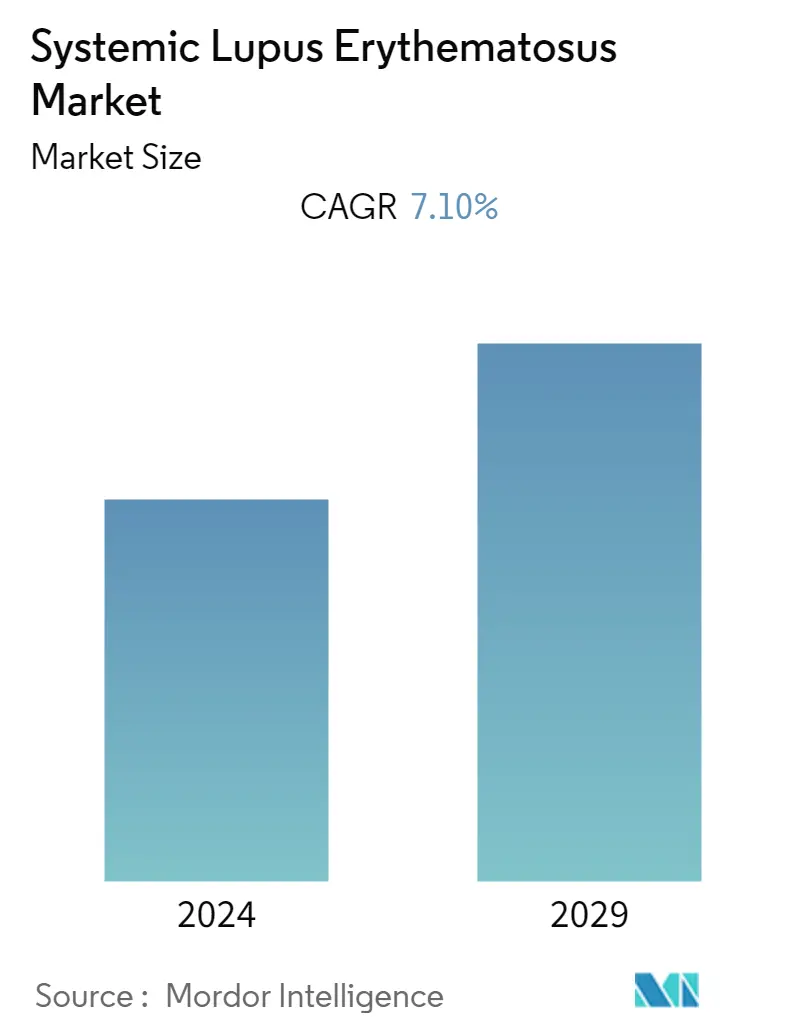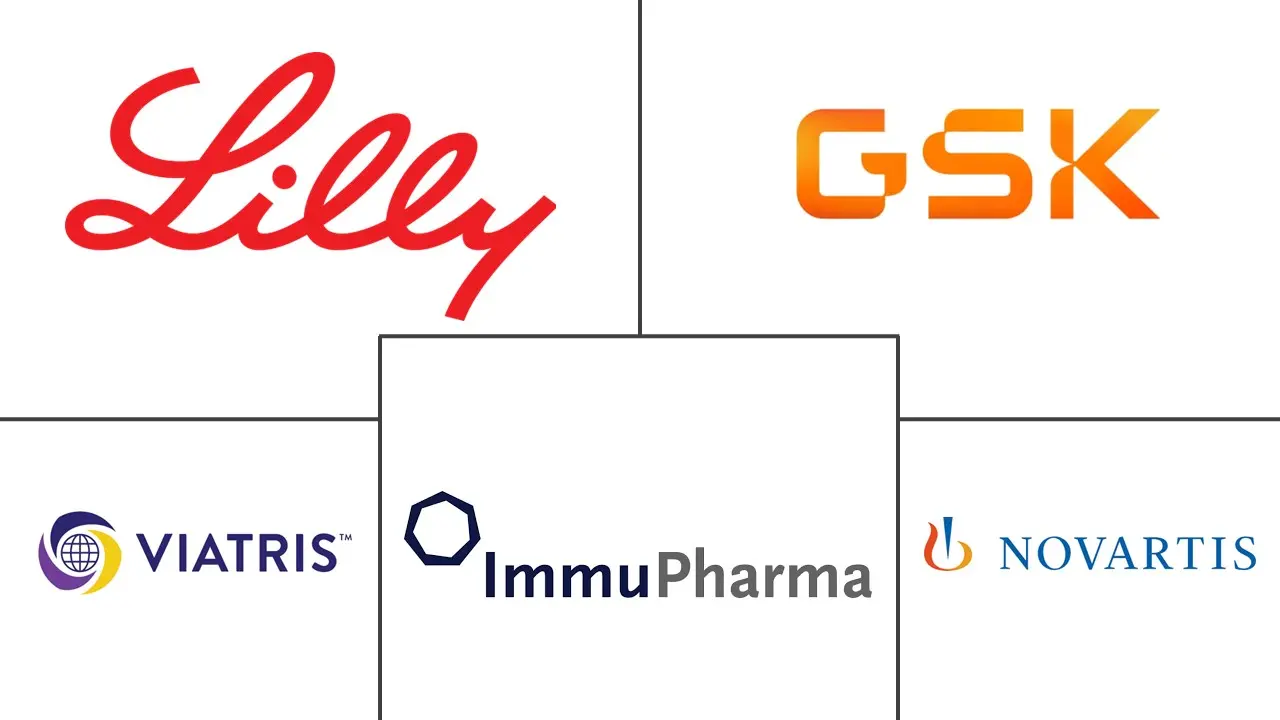Market Size of Systemic Lupus Erythematosus Industry

| Study Period | 2021 - 2029 |
| Base Year For Estimation | 2023 |
| CAGR | 7.10 % |
| Fastest Growing Market | Asia Pacific |
| Largest Market | North America |
| Market Concentration | Medium |
Major Players
*Disclaimer: Major Players sorted in no particular order |
Need a report that reflects how COVID-19 has impacted this market and its growth?
Systemic Lupus Erythematosus Treatment Market Analysis
The systemic lupus erythematosus market is poised to grow at a CAGR of 7.1% during the forecast period.
COVID-19 has significantly impacted the growth of the systemic lupus erythematosus market because SLE patients are prone to COVID-19 infection on account of the aberrant immune responses inherent to the disease and the frequent treatment of immune suppressants. For instance, according to an article published by the National Library of Medicine, in May 2022, the prevalence of COVID-19 infection varied between 0.0% and 18.1% in SLE patients, and the hospitalization rates ranged from 0.24% to 10.6%. A decline in SLE hospitalization rate was found during the COVID-19 pandemic, and disease flare (38.9%) and infection (22.2%) were considered the main reasons for hospitalization in SLE patients. Furthermore, as per the study published in May 2022, by the National Library of Medicine, during the pandemic, SLE patients with COVID-19 experienced medicine supply shortages, missed medication doses, financial hardships, and psychological suffering. However, currently, as there is better access to drugs as compared to the initial pandemic phase due to the lockdown, the market is expected to gain its growth pace over the coming 3-4 years.
Factors such as the increasing prevalence of systemic lupus erythematosus, growing risk factors, and medical advancements by biopharmaceutical companies in SLE are expected to drive the market over the forecast period. For instance, according to an article published by Frontiers Media S.A., in April 2021, the prevalence rate of SLE varied from 4.8 to 91 per 100,000 people across sexes, age groups, geographical regions, and ethnic backgrounds. The incidence and prevalence rates in people of African or Asian backgrounds were approximately 2-3-times higher than those in white populations. Furthermore, according to a CDC update, in July 2022, poor access to care, late diagnosis, less effective treatments, and poor adherence to therapeutic regimens may increase the damaging effects of systemic lupus erythematosus, causing more complications and an increased risk of death. SLE can affect people of all ages, including children. Thus, when SLE risk factors increase, so does the demand for SLE drugs, propelling the market's growth over the forecast period.
Several biopharmaceutical companies are seeking approval for the advancement of SLE to improve the treatment of SLE including the identification of genetic variations, an enhanced understanding of innate and adaptive immune activation and regulation of tolerance, and dissection of immune cell activation. For instance, in August 2021, AstraZeneca received approval from the United States Food and Drug Administration for Saphnelo (nivolumab-final) for the treatment of adult patients with moderate to severe systemic lupus erythematosus (SLE) who are receiving standard therapy. Additionally, in July 2022, US FDA approved GSK plc's Benlysta (belimumab) for the treatment of children aged 5 to 17 with active lupus nephritis (LN) who are receiving standard therapy. In lupus nephritis, SLE causes kidney inflammation of the small blood vessels that filter wastes in your kidney. BENLYSTA is indicated for patients aged 5 with active SLE. These improvements in clinical trial design, form a platform from which to launch the development of a new generation of lupus therapies.
Thus, the above-mentioned factors are expected to fuel growth in the SLE market over the forecast period. However, the high cost of treatment and several misconceptions and social stigmas are expected to be the primary hindrances.
